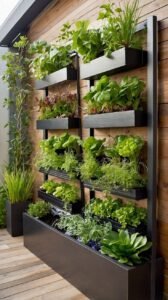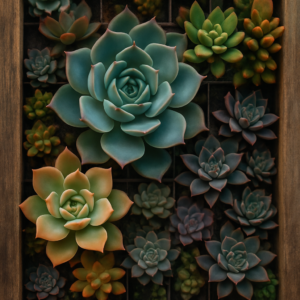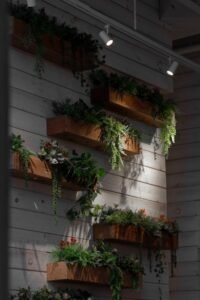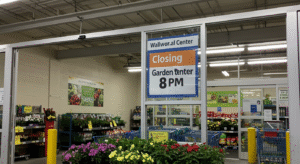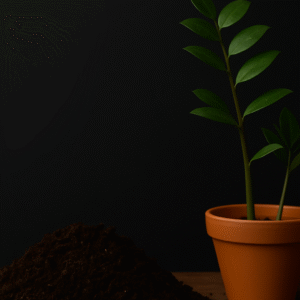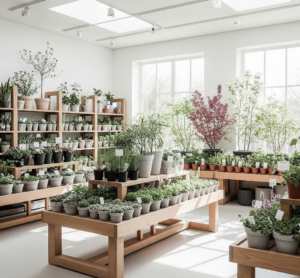The Different Ways Vertical Gardening Can Transform Your Home For The Better

vertical garden
Vertical gardening caters to the interests of both homeowners and those living in apartments, especially when urbanization is on the rise and green areas are quickly disappearing. This unique type of gardening is the art of growing plants on walls, trellises, or stacked containers, giving it an ideal approach to increasing greenery in limited spaces. Vertical gardening is about pleasing the eye and promoting sustainability, enhancing the home’s beauty, and improving air quality. Whether you live in a big house or a small apartment, this art adds an element of nature that changes living places into calm, lush retreats. But, it goes beyond just aesthetics. Vertical gardens help provide natural insulation, control indoor temperatures, and create a healthier environment for people. As more people are moving into cities, vertical gardening is changing the perception of how people can connect with nature while being indoors. So, what else does vertical gardening do for you and your home? Let’s find out.
The Use and Development of Vertical Gardening in Cities
As cities expand, they economize available space within a geographical area. The availability of space suitable for traditional gardening is one notable change. Backyards are turning into high-rise apartments, so city dwellers want to plant greenery in their interiors. Vertical gardening is one of the most practical solutions to this problem and has made a name for itself, especially in big cities. Its expansion can be attributed to the flexibility vertical gardening provides. Unlike traditional gardens that take massive horizontal land, vertical gardens use walls, balconies, and indoor walls for plant cultivation. This flexibility is advantageous to those living in apartments with little outdoor space.
New advancements in vertical gardening have their innovations. Hydroponic systems, self-watering planters, and modular living walls have simplified vertical gardening. Modern vertical gardening technology, including innovative watering systems and automated nutrient delivery, enables effortless garden upkeep. Architects and interior designers increasingly integrate vertical gardens into homes and commercial spaces for their ecological and beautifying value. Urban buildings now have green walls or vertical gardens to beautify and improve indoor air quality. With increasing awareness, more people are adopting green living by changing their homes into lush paradises.
Aesthetic and Psychological Benefits
Vertical gardens are not just a collection of plants; they’re a well-structured piece of art that can beautify a wall or a free space in your home. Their versatility makes them perfect for transforming spaces, whether it’s a wall full of cascading ferns or a simple arrangement of succulents. These gardens not only serve decorative purposes but also help improve your home’s aesthetic, making it feel fresh. This fresh feeling and improved beauty can have a significant impact on your mental health. Research suggests that green spaces, such as vertical gardens, can reduce stress levels, enhance mood, and create a more tranquil atmosphere. The calming influence of plants can bring considerable value to your home by helping to reduce anxiety and depression. It’s a way to feel cared for and supported in your own space.
Furthermore, vertical gardens enhance indoor air quality. Plants serve as air cleansers by taking in harmful substances and giving out oxygen. Some species, like snake plants and pothos, are especially good at filtering toxins and making the environment healthier. Vertical gardening is an ideal therapeutic escape for people who want to feel closer to nature. The processes involved, like watering, pruning, and tending to plants, are gratifying. In the modern, busy world, having a green sanctuary at home promotes mindfulness and relaxation, making any space a personal oasis.
Functional and Space-Saving Benefits
In densely populated cities, square footage is a luxury. Traditional gardening requires horizontal space, which is often unavailable to most people living in condos and houses with gardens. However, vertical gardening offers a practical solution. By growing plants on walls, fences, and other surfaces, it turns neglected spaces into green zones. This form of gardening encourages people to be resourceful and turn even the smallest of spaces, like movable balconies, small patios, and indoor walls, into productive green spaces. It’s a way to feel empowered and make the most of what you have.
Vertical gardens offer a myriad of practical benefits in addition to saving physical space. They serve as natural privacy screens, shielding people from unwanted sights. Climbing plants and wall-mounted planters can serve as living barriers that offer seclusion without the need for hideous fences or dividers. Vertical gardens are also extremely helpful in reducing noise pollution, particularly in urban areas where traffic and other neighborly mayhem are commonplace. Sound waves are absorbed by plants, which aid in creating a more peaceful environment both indoors and outdoors. Lastly, these gardens are fundamental in purifying air because they filter something as dangerous as toxins and emit oxygen, improving indoor air quality.
Putting vertical gardening into practice can be customized based on available space and personal preference. For small apartments, wall-mounted planters are easier to install as they don’t take up any space on the floor. It is one of the most popular ones available. Trellises and climbing frames are perfect for patios and balconies because they support vining plants like jasmine and ivy. Hydroponic living walls are highly efficient for advanced setups since they don’t use soil to support plant growth; instead, they depend on nutrient-rich water, making them low-maintenance.
Ideal Plants for Vertical Gardening
When it comes to a productive vertical garden, choosing plants wisely is very important. The benefits of vertical gardening will depend on the light, humidity, and maintenance levels. Moreover, some plants can be placed indoors while others require the outside. A combination of flowering, air-purifying, and edible plants can make the garden appealing and serve multiple purposes.
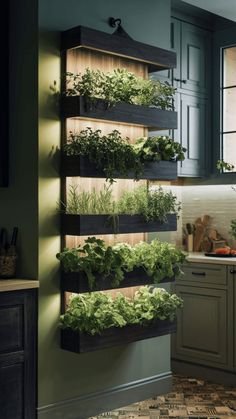
Small fruiting plants and herbs would be ideal choices for people who wish to have an ornamental vertical garden that is also functional. Wall planters can be utilized to grow mint, parsley, and thyme, which are low- to moderate-maintenance plants perfect for kitchen gardens. Hanging planters can also grow strawberries and cherry tomatoes, enhancing the aesthetics of balconies and patios. Ideally, these plants should receive sunlight and moderate watering to remain healthy.
When it comes to maintaining health standards and improving indoor air quality, plants are an excellent source of keeping air clean. Pothos, ferns, and peace lilies are great examples and easy to maintain. Pothos adapt very well to various light conditions, whereas Boston ferns, on the other hand, thrive in humid environments and help filter toxins. Peace lilies striking white blooms also serve as a key factor in improving indoor vertical gardens.
To make your outdoor walls stand out, it is best to use petunias and nasturtiums for simple and fast-growing accents. Their striking colors help attract the attention needed to distinguish your wall from the rest of the structures. Along with orchids, these flowering plants are easy to take care of, and nasturtiums can thrive with the right amount of direct light and moisture. With continuous pruning, these plants instantly improve the aesthetics of a place and will look beautiful all year round, even in colder seasons.
Conclusion
Vertical gardening practices provide even the most confined. Don’t fret; there is new hope for improving the living space. Expanding vertical surfaces creates an enriched, attractive landscape, doubling as an air filtration system. It also helps vegetation promote the environment. Vertical gardens offer practical solutions for urban living, including growing herbs, air-purifying plants, and even colorful flowers. Wall-mounted planters and hydroponic systems are examples of the numerous techniques available for every home. Start small, explore the many different plants, and reap the advantages of having greener surroundings.
